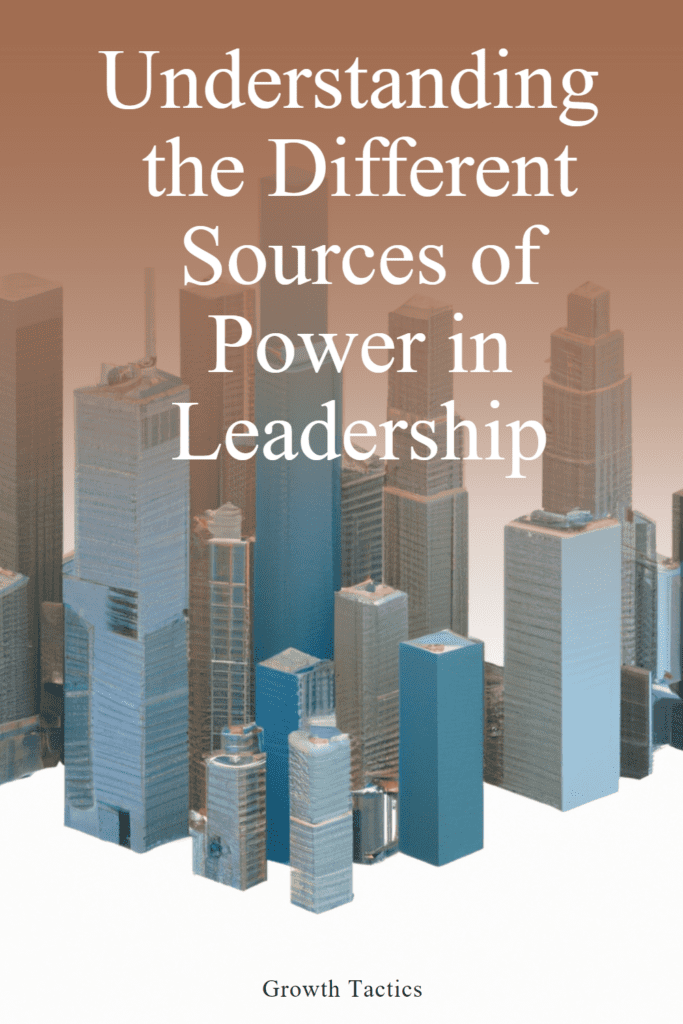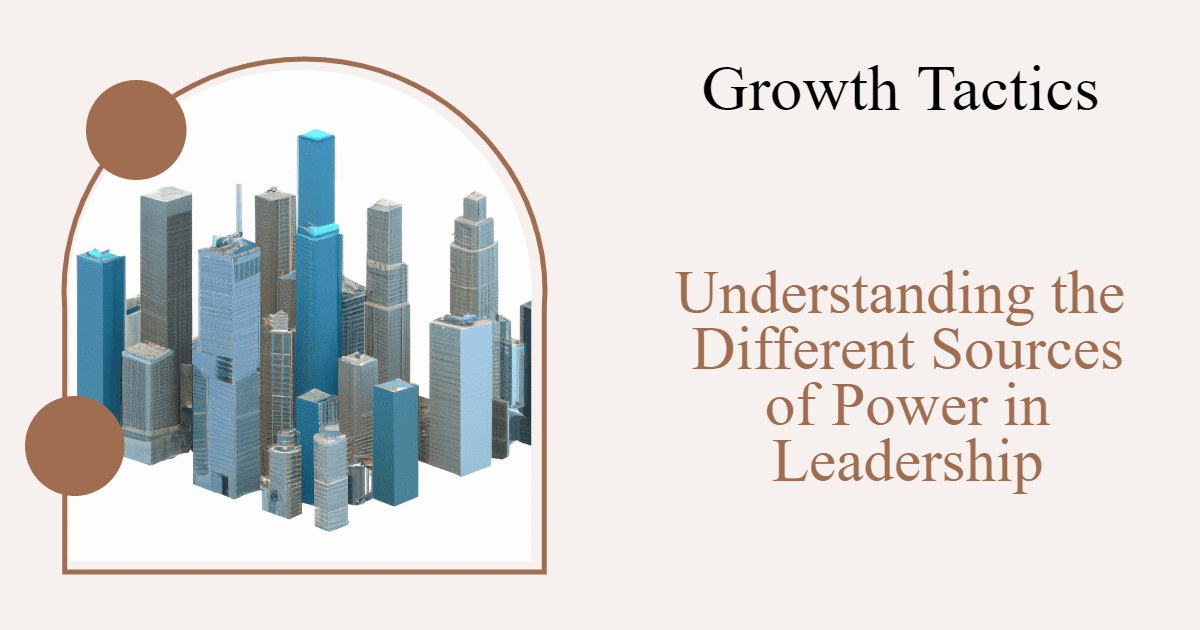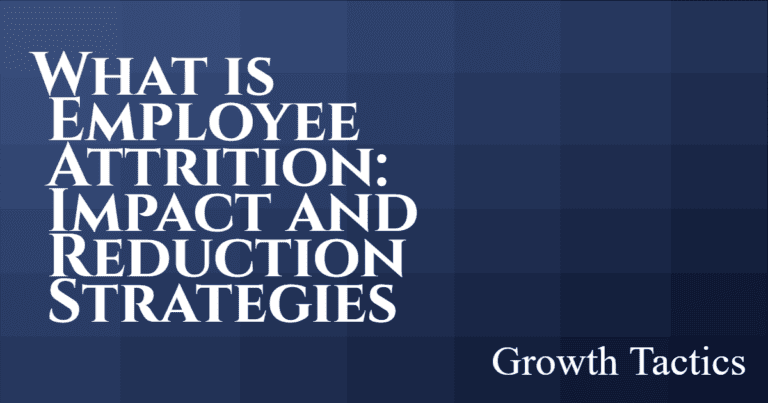In today’s dynamic and competitive business environment, effective leadership is crucial for success. One of the key aspects of effective leadership is understanding the various sources of power in leadership used to influence others. In this article, we will explore the different sources of power, the types of power commonly seen in leadership, and how leaders can harness these powers to become more effective.
Jump To Section
Bases of Power: Understanding the Source of Power
Power can be derived from various sources, including expertise, authority, relationships, rewards, and coercive means. These sources form the foundations of power and determine the potential influence a leader can have. Leaders must recognize and leverage these sources to effectively exert their influence.
Types of Power: Exploring Different Ways to Influence
There are several types of power commonly seen in leadership, including referent power, expert power, legitimate power, coercive power, and reward power. Each type has its characteristics and impact on the dynamics of leadership. Understanding these types of power allows leaders to choose the most appropriate approach based on the situation.
Understanding Referent Power: Inspiring through Trust and Respect
Referent power is a type of power that is built upon the admiration, respect, and trust that others have for a leader. It is characterized by charisma and the ability to inspire and motivate others. Leaders with referent power are role models, influencing their followers through their values, beliefs, and behaviors. This power significantly impacts team cohesion and morale, fostering a positive work environment.
Building Referent Power
- Consistently demonstrate integrity and ethical behavior
- Show genuine care and concern for team members
- Lead by example and embody the values you expect from others
- Develop strong interpersonal skills and emotional intelligence
- Create a positive and inclusive work environment
The Influence of Expert Power: Leveraging Knowledge and Skills
Expert power is derived from a leader’s knowledge, expertise, and skills in a particular area. Leaders with expert power are credible and competent, and their opinions and decisions carry weight. Their valuable insights and experience make them influential figures within their respective fields. Expert power allows leaders to influence others through their knowledge, fostering an environment of continuous learning and growth.
Developing Expert Power
- Continuously update your knowledge and skills in your field
- Seek out opportunities for professional development and learning
- Share your expertise through mentoring and teaching others
- Stay current with industry trends and best practices
- Demonstrate your competence through successful project outcomes
Navigating Legitimate Power: Authority and Responsibility
Legitimate power is derived from a leader’s position or role within the organization. It is the power that comes with formal authority and the right to make demands or give orders. Leaders with legitimate power can enforce rules and policies, allocate resources, and make important decisions. This power is built upon the hierarchical structure of the organization.
Enhancing Legitimate Power
- Clearly communicate your role and responsibilities within the organization
- Understand and adhere to organizational policies and procedures
- Make fair and unbiased decisions
- Delegate tasks and responsibilities appropriately
- Use your authority to support and empower your team members
Balancing Coercive Power: Using Authority with Caution
Coercive power is the ability to control or restrain others through fear, punishment, or negative consequences. It relies on the use of coercive tactics to influence others. While this type of power can yield short-term compliance, it can also create negative repercussions such as resentment and resistance. Effective leaders understand the limitations of coercive power and use it sparingly, preferring to inspire and motivate their teams through other means.
Balancing Coercive Power
- Use coercive power sparingly and only when absolutely necessary
- Ensure that any disciplinary actions are fair, consistent, and follow company policies
- Focus on constructive feedback and coaching rather than punishment
- Create a culture of accountability rather than fear
- Be transparent about the reasons behind any corrective actions
Harnessing Reward Power: Motivating through Recognition and Incentives
Reward power is based on a leader’s ability to provide rewards, incentives, or desirable outcomes to influence others. It is the power to recognize and reward achievements, which can motivate individuals or teams to perform at their best. Leaders with reward power can distribute resources, provide growth opportunities, and create a positive work environment.
Leveraging Reward Power
- Develop a comprehensive understanding of what motivates your team members
- Implement a fair and transparent reward system
- Recognize and celebrate both individual and team achievements
- Offer opportunities for growth and advancement within the organization
- Provide both tangible and intangible rewards (e.g., praise, additional responsibilities)
By understanding the characteristics and impact of each type of power, leaders can make informed decisions and employ the most suitable approach in different leadership situations. It is crucial to recognize the potential influence and consequences of each type of power, using them in a balanced and ethical manner. Effective leaders leverage their powers appropriately to inspire, motivate, and drive their teams toward success.
Leadership Power: The Intersection of Power and Influence
Power in leadership goes beyond individual sources and types. It involves the ability to inspire, motivate, and guide others toward achieving a common goal. Effective leaders understand how to balance the use of different types of power to create a positive and productive work environment.
Personal Power: Leveraging Internal Strengths
Personal power is an essential aspect of leadership that comes from an individual’s unique traits, skills, and abilities. It is deeply rooted in the respect and trust that others have for a leader. By investing in the development of personal power, leaders can enhance their ability to effectively influence and lead others.
When we talk about personal power, we refer to the innate qualities and characteristics that make a leader unique and respected. These could include qualities such as integrity, resilience, emotional intelligence, and strong communication skills. Leaders who possess these traits naturally command the respect and trust of their team members.
However, personal power is not solely determined by inherent traits. It can also be cultivated and developed through continuous self-improvement efforts. By honing their skills, expanding their knowledge, and seeking personal growth opportunities, leaders can amplify their power.
Developing personal power has numerous benefits for leaders. Firstly, it enhances their ability to influence and inspire others. When team members see their leader as someone with integrity, competence, and a strong sense of purpose, they are more likely to be motivated and follow their lead.
Secondly, personal power fosters trust and loyalty within the team. When leaders consistently demonstrate their competence and authenticity, team members feel more comfortable opening up, being honest, and aligning their efforts with the leader’s vision.
Lastly, personal power provides leaders with a solid foundation to navigate challenges and make tough decisions. Leaders who possess personal power are often seen as credible and reliable sources, making it easier for them to guide their teams through uncertainties and obstacles.
How to Develop Personal Power
To develop personal power, leaders can engage in self-reflection, assess their strengths and weaknesses, and actively seek opportunities for personal and professional growth. This could include attending leadership development programs, seeking mentorship from experienced leaders, or engaging in ongoing education.
Positional Power: Power Derived from Roles and Titles
Positional power in leadership stems from the formal authority and responsibilities that come with a leader’s role or position. It is an important concept for leaders to grasp, as it enables them to effectively use their authority while also building trust and respect within their teams.
As leaders, it is crucial to understand that positional power alone is insufficient for sustainable and effective leadership. While formal authority can establish boundaries and provide a framework for decision-making, relying solely on positional power can lead to a command-and-control style of leadership that may hinder employee engagement and motivation.
Maximizing Positional Power
To maximize the impact of positional power, leaders must focus on building trust and respect among their team members. This can be achieved by demonstrating competence, fairness, and transparency in decision-making processes. Leaders who actively involve team members, seek their input, and value their perspectives create a culture of mutual respect and trust.
Furthermore, leaders should strive to inspire and motivate their teams beyond their positional authority. By fostering open communication, actively listening to team members’ concerns and ideas, and providing support and resources, leaders can create an environment that encourages autonomy and innovation.
Incorporating a collaborative and inclusive leadership style, leaders can leverage their positional power to guide and empower their teams toward achieving common goals. By emphasizing transparent communication, constructive feedback, and recognizing individual contributions, leaders can foster a positive work culture where team members feel valued and motivated, ultimately leading to higher levels of performance and productivity.
Ultimately, understanding how to effectively use positional power involves recognizing its limitations and complementing it with relational and influential leadership approaches. By combining formal authority with the ability to build trust, respect, and collaboration, leaders can create a conducive environment for both personal and organizational growth.
As experienced leaders ourselves, we understand the importance of striking the right balance between positional power and relational leadership. We aim to provide guidance and insights while having a friendly conversation, helping you make informed decisions and navigate the complexities of leadership successfully.
Becoming an Effective Leader: Harnessing Power to Influence
As leaders, it is crucial to continuously develop our skills and knowledge to become more effective in our roles. One important aspect to focus on is understanding and harnessing the different sources and types of power available to us. By doing so, we can enhance our ability to influence others, build trust and respect, and create a positive and productive work environment.
The concept of power in leadership encompasses various dimensions. We have referent power, which is derived from the respect and trust that others have for us, based on our character and qualities. Expert power comes from our knowledge, skills, and expertise in a particular field. Legitimate power is derived from our formal authority and responsibilities within the organization. Coercive power involves the use of fear and punishment to influence others, while reward power is based on providing incentives and positive outcomes.
To become a more effective leader, it is important to develop a deep understanding of these power dynamics. By recognizing and utilizing the different sources of power in a balanced and ethical manner, we can inspire and motivate our teams, foster a culture of trust and respect, and create an environment where everyone can thrive.
Understanding power dynamics also helps us navigate challenging situations, make informed decisions, and resolve conflicts effectively. By leveraging our personal power and expertise, we can influence others through authentic leadership and build strong relationships based on trust and respect.
Creating a positive and productive work environment is a critical goal for leaders. By understanding power dynamics, we can foster a culture of collaboration, where everyone feels valued and empowered. This involves encouraging open communication, actively seeking input and feedback from team members, and creating opportunities for growth and development.
Summary: Key Takeaways to Remember
- Power in leadership can be derived from various sources, such as expertise, authority, relationships, rewards, and coercive means.
- There are different types of power, including referent power, expert power, legitimate power, coercive power, and reward power.
- Effective leaders balance the use of different types of power and understand the importance of influence in leadership.
- Personal power is rooted in an individual’s traits, skills, and abilities, while positional power is derived from roles and titles.
- Expert power and referent power are two valuable assets for leaders to influence and lead others effectively.
- Coercive power should be used sparingly and consciously.
- Becoming an effective leader involves harnessing power to influence, building trust and respect, and creating a positive work environment.
Remember, understanding the different sources and types of power in leadership is essential for developing effective leadership skills. By leveraging the right sources of power and adopting appropriate leadership styles, you can inspire and motivate others, foster growth and development, and drive success in your organization.








